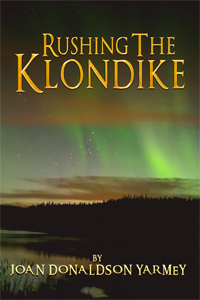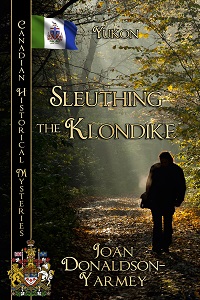Juliet “Judy” W. (Liddle)
Hennessy died Jan. 10, 2025, at home in Yellow Springs. She was 97 years old.
She was born March 28, 1927, in Rockville Centre, New York, to Dr. Albert W.
and Ruth P. Liddle and joined two sisters, Dorothy and Jean. At the time, her
father taught English literature, including Chaucer, Shakespeare, Milton and
others at New York University. He was recruited by Arthur Morgan to come to
Yellow Springs and teach at Antioch College.
Shortly after Judy’s birth, the
young family moved to Yellow Springs in a 1925 Model T Ford, arriving and
camping in a tent in Glen Helen near the Birch Creek Cascades for several
weeks, until lodging was available. When Mrs. Lucy Morgan came to welcome the
family to Yellow Springs and Antioch, she left her calling card in the tent
flap, as they were out and about.
Somehow or other, I have come the oldest living member of my grandparents' descendants.
My Aunt had all her wits about her when she died, something you can't always say about such old people. When I was born, World War II was still in progress, both in Europe and in the Pacific. My Dad was in Burma. My Uncle Richard, married to sister Jean, was in Europe. Judy was not married yet, because her beaus were away at war. Judy worked at Wright Field (Wright Patterson) in those days.
L to R: Aunt Judy, my Mother, Dorothy, & Aunt Jean
The three sisters, Judy, her sister Jean, and my mother, Dorothy, were all still living in their parents' house, a big four square with an enormous maple which shaded the brick patio behind the kitchen. There was an astonishing garden, too, filled with roses, spring bulbs and many other flowers and also--long before our time--native plants, such as Jack-in-the-Pulpit, Ferns, Trillium, Dutchman's Britches, May apples, Trout Lilies and Dog-Tooth violets. Grandpa also grew grapes on arbors, raspberries, rhubarb as well as lettuce and huge, delicious tomatoes. There was a pear tree and cherry trees, too, all benefiting from horse manure from my mother's much loved mare.
My earliest memories are of moonlight coming through the leaves on that old tree and making patterns on the crib sheet where I was dozing. From the room next door, a large bathroom, I could hear the women of the house talking and bathing. This was a safe place then, and it remains so in memory.
Here are some B&W pictures from the late 40's and 50's. That's me, the flower girl at Judy's wedding, wondering what the heck the grown-ups are doing? I could tell it was some kind of adult in-joke, and somehow I felt a little embarrassed by this undignified, giggly moment. However, it was clearly the time of breaking into that delicious cake, so of course I was intrigued, especially if this odd behavior meant there's soon be cake for me!
The groom is my Uncle Leo, a great guy she'd met at Antioch College where she was working, and where he was studying chemistry on the GI bill after tours of duty in the navy, where he served in both WW II and in Korea. He was a favorite uncle, with a legendarily dry wit, and a taste for jazz, both cool and hot. He and my father sometimes went stag to jazz clubs in Dayton. In those days Dayton was a big melting pot, still bustling with factories and employing hosts of workers. Leo became a brilliant chemist, and he had a successful career.
Homecoming Court picture
At Ohio State, my aunt was on homecoming court as the independent representative, sponsored by the returning war veterans. She graduated with degrees in Sociology and Home Economics, but all she truly ever wanted to be was to be a wife and mother. She worked for some years, however, at Wright Field (Wright Patterson Airforce Base) in Springfield, and at Antioch College, until my cousins began arriving.
This picture is of my first bus trip--off to a department store for shopping and lunch. I remember being lectured by my mother about being a good girl and not causing any trouble, which probably accounts for my anxious expression. However, once I was away with Aunt Judy, there was no worry at all. We had lunch in a tea room at the department store, and I remember feeling rather grown-up.
My Aunt was very special to me. One memory I have is of staying overnight with Judy and Leo when they lived in a tiny apartment. I have memories of sleeping overnight in a space that might have been a deep closet shelf, proceeded by many cautions not to fall off, but I remember this as a grand adventure. Judy and Leo always made things fun.
Those happy days when our family lived together in that unique little college town eventually came to an end. My parents were the first to leave, heading to the Finger Lakes area in New York, near Syracuse, where my Dad worked in the then nascent industrial air-conditioning business. Here's a picture of me, my 6 month old Cousin Kevin and my Aunt in an upstairs bedroom when they came to visit us.
~~Juliet Waldron

.jpg)


%20wedding%20cake.jpg)






























